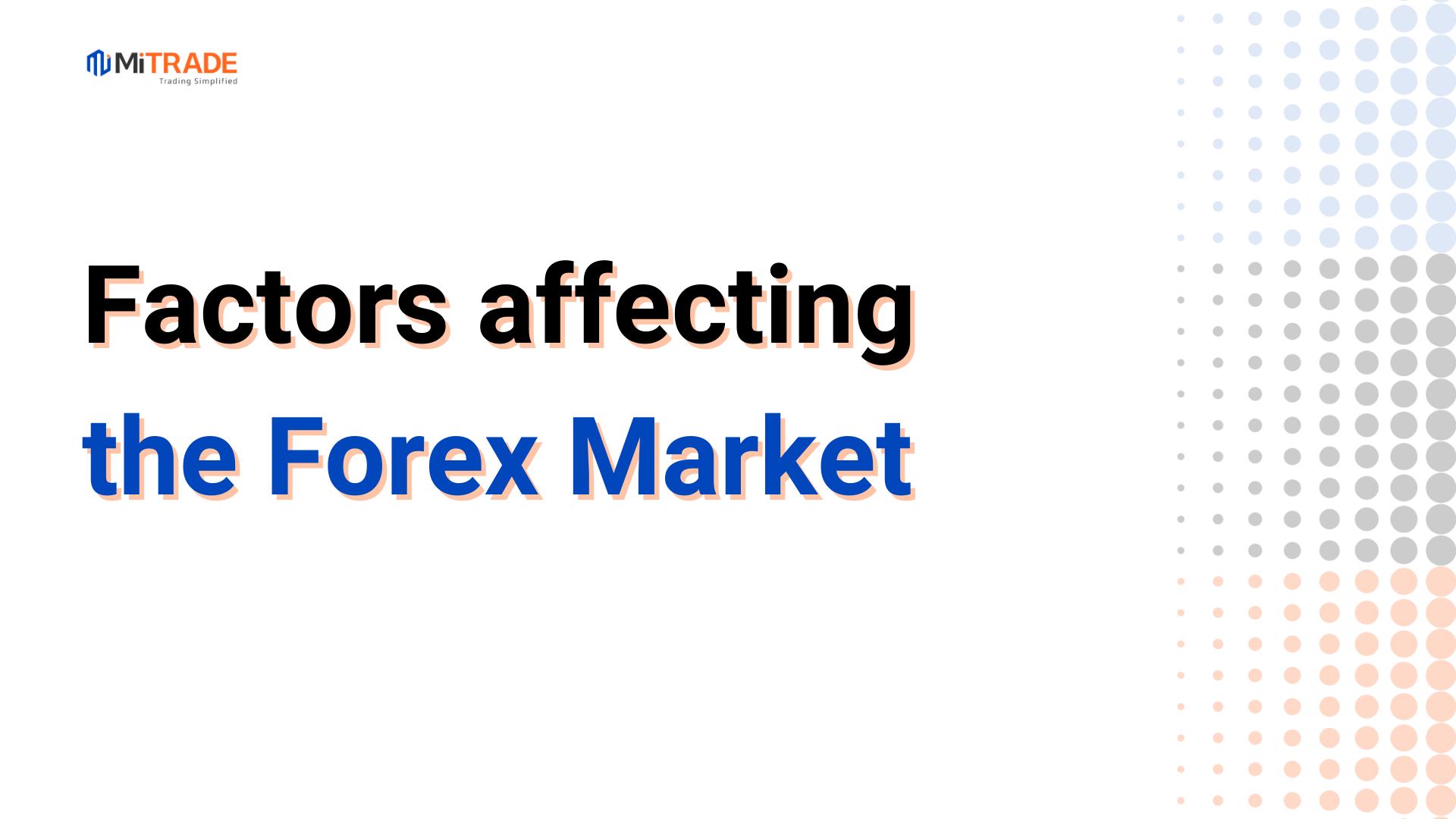Factors that affect the Forex Market

First of all, the price or rate of the currency pair is determined by supply and demand. The currency pair rates are determined by the market forces of supply and demand for foreign exchange. On top of this, there are also external factors that can affect forex prices.
They can be broadly categorized into 3 types; Economic, Political, Market Sentiments.
Economic Statistics and Forex
Economic reports are the backbone of any trader’s playbook.
Gross domestic product (GDP) may be the most visible economic statistic, as it is the baseline of a country’s economic performance and strength. GDP measures the total output of goods and services produced within an economy. However, it is crucial to remember that GDP is a lagging indicator. That means it reports on events and trends that have already occurred.
Inflation is also a significant indicator, as it sends a signal of increasing price levels and falling purchasing power. However, inflation is a double-edged sword. Many view it as placing downward pressure on a currency due to retreating purchasing power. Inflation can also lead to currency appreciation, as it may force central bankers to increase rates to curb rising inflation levels. Inflation is a hotly-contested issue among economists, and its effects on currencies are rarely straightforward.
Employment levels, retail sales, manufacturing indexes, and capacity utilization also carry important information on the current and predicted strength of an economy and its currency. They can provide confirmation for the primary factors we’ve outlined above.
One of the most highly anticipated monthly economic news event is the nonfarm payroll (NFP) report. It is a key economic indicator for U.S. and represents the total number of paid workers in this U.S excluding those employed by farms, the government, private households, and nonprofit organizations. The NFP reports are released on the first Friday of every month.
Political News and Forex Markets
The political landscape plays a vital role in the overall outlook for a country and, consequently, the perceived value of its currency. Forex traders are constantly monitoring political news and events to anticipate changes in the economic policies of national governments. These can include shifts in government spending and adjustments in regulations imposed on particular sectors or industries. Changes in rules regarding margin or leverage available to traders often have a dramatic impact on markets.
Change of leaders or elections are always significant events for currency markets. Exchange rates often react favorably to wins by pro-growth or fiscally responsible parties. A referendum can also have a substantial impact on exchange rates. A good example is the Brexit vote, which had a dramatic effect on the British pound when the U.K. voted to leave the EU.
The fiscal and monetary policies of any government are the most critical factors in its economic decision making. Central bank decisions that impact interest rates are keenly watched by the forex market for any changes in key rates or the future outlook of policymakers.
Market Sentiments
Market sentiment refers to the overall attitude of investors toward a particular security or financial market. It is the feeling or tone of a market, or its crowd psychology, as revealed through the activity and price movement of the securities traded in that market.
Sentiment drives demand and supply, which in turn leads to price movements. The market sentiment is bullish when prices are rising, whereas it is bearish when prices are falling. Traders combine market sentiment indicators with trading frameworks or other forms of analysis in order to refine their entry and exit signals.
One of the most highly anticipated monthly news events is the NonFarm Payroll. The Nonfarm payroll is considered a/an ___________ factor. Economic Political Market SentimentTest your Knowledge
* The content presented above, whether from a third party or not, is considered as general advice only. This article should not be construed as containing investment advice, investment recommendations, an offer of or solicitation for any transactions in financial instruments.



